Type Spread | ||
 | ||
Main ingredients Fruits (apricots, peaches, strawberries, plums, prunes, raspberries, cherries or sour cherries) Similar Common plum, Palatschinke, Cremeschnitte, Linzer torte, Kolach | ||
Galagonya lekvar fozes
Lekvár is a thick jam or fruit butter of Central and Eastern European origin. Lekvár is a very thick, sometimes coarse jam of pure ripe fruit.
Contents

Lekvár is usually made of fruits like apricot, peach, strawberry, plum, prune, raspberry, cherry or sour cherry, but apples, and less usually, green whole walnuts, muscadine grapes or figs may also be used.
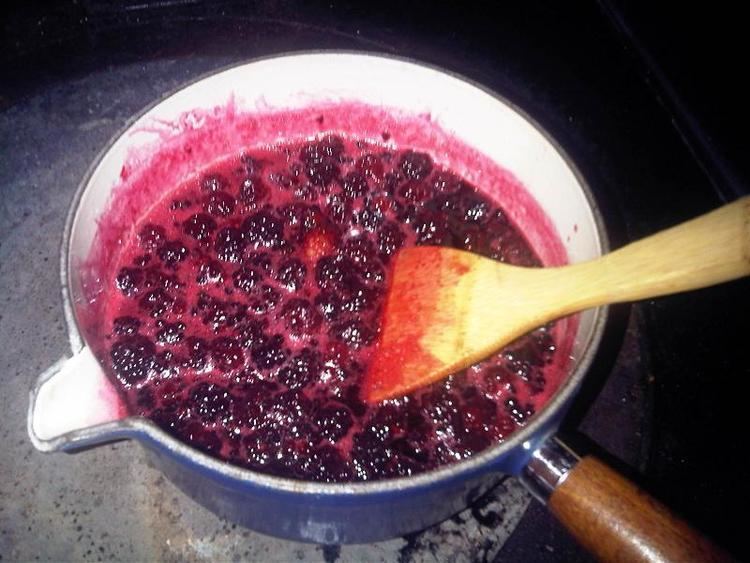
Lekvar is used in filling palacsinta pancakes, pastries like Buchteln (or buchta), kifli, or strudel and other sweet yeast breads, pastries, cookies, and pierogi, as a spread on toast or biscuits, and in fruit sauces. In Jewish communities, lekvar is a common filling for hamentashen.
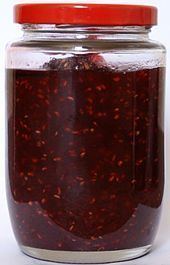
ipkovy lekvar
Preparation
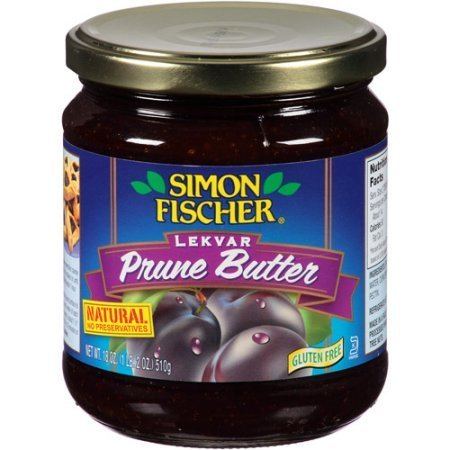
To prepare the fruit, seeds are removed. To remove the seeds, apples are cored and cherries, plums and apricots are pitted. Grape skins are separated from the pulp. The pulp is cooked until liquid, then strained to remove the seeds. The strained pulp and skins are then combined and cooked further. The fruit butter is prepared by cooking the fruit, including the skins, in water until soft. Skins are retained to improve the flavor, texture, and color. Once the fruit is soft, sugar may be added, if desired. Prune and apricot butter generally require no added sugar. The fruit butter then is cooked slowly, adding water so that it does not burn, until both thickened and macerated to the desired extent. The lekvár is filled in jars and the jars are steamed and locked.
Etymology
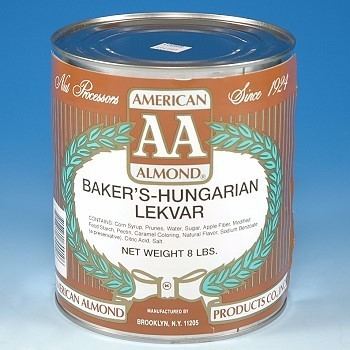
Hungarian lekvár, jam, from Slovak lekvár, from Czech povidla, meaning electuary, from Middle High German lactwarje, latwarge, from Old French leituaire, from Late Latin electuarium.
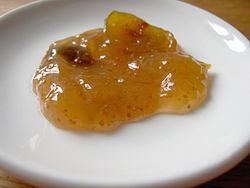
The first use of the term lekvar was noted from before 1350, used by medical practitioners as a medicinal paste or syrup to hide the medicine taste.
Culture
In Hungary, good housekeeping calls for homemade lekvár cooking in the autumn, when most fruits are ripened. In Poland, lekvar is a regional food cooked in the Lower Vistula Valley in Poland. Several villages organize folk feasts, during which lekvar is cooked in copper kettles (cauldrons).
